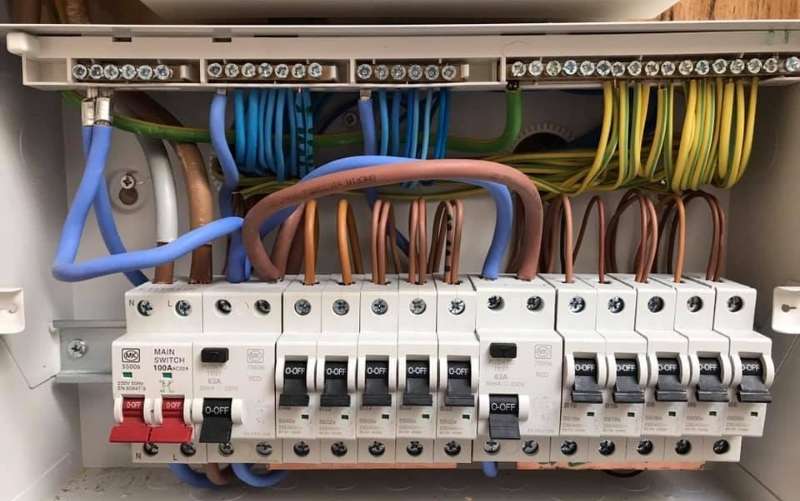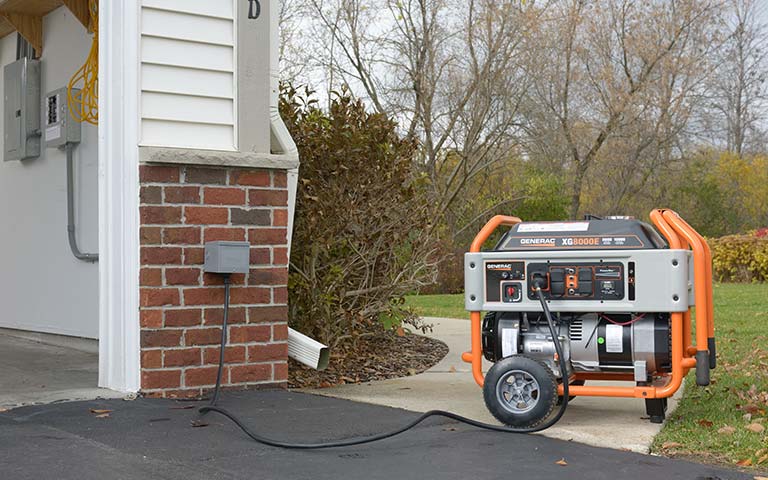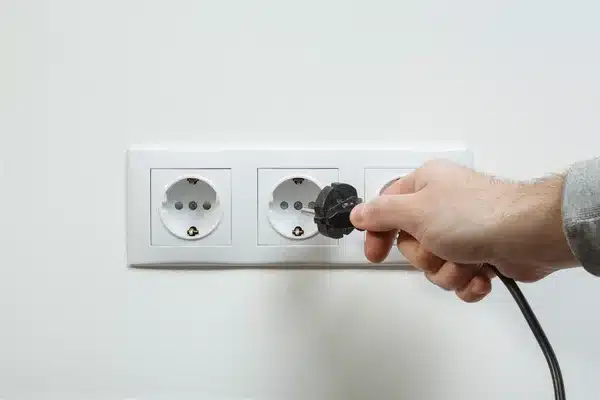Subpanels and fuse boxes, often tucked away and overlooked, are the heart of your home’s electrical system, powering appliances and controlled by the main breaker. These electrical boxes might seem unassuming, but they play a critical role in controlling the flow of electrical current in your electrical system through the electrical wiring. Whether you’re dealing with a main fuse box or a subpanel, each one is designed to meet different electrical needs, handle various circuits, and has its unique voltage rating. Keep in mind the importance of ground fault protection and the correct use of fuses. But here’s the kicker – installing and maintaining an electrical subpanel, complete with breaker switches and circuits, isn’t as simple as flipping a ground fault switch! The future of AC is about understanding service panels, circuits, switches, and how they manage the electrical current in homes. This includes the main panel and fuse system.
Essential Materials and Tools for Installation
The Right Tools Make a Difference
Installing an electrical panel isn’t a piece of cake. It’s not just about picking up a screwdriver and getting to work on the fuse, electrical wiring, parts, or electric panel. You need an arsenal of tools.
- Screwdrivers
- Pliers
- Wire strippers
- Voltage testers
Electrical panels and electric service panels aren’t your everyday garage items, but they’re essentials in the installation process. Don’t forget about the furnace in the bedroom closet, along with the electrical box and electric panel.
Panel Box and Circuit Breakers: The Heart of the System
Now that we’ve sorted our electric panel tools, let’s discuss the parts and system, focusing on switches and other components. A heating & cooling electrical panel, housing switches and a fuse, is more than just a metal box in your storage room; it’s a crucial service system for temperature regulation. It’s the heart of your home’s electrical system.
What you’ll need:
- A quality panel box.
- Sufficient circuit breakers matching your appliances’ requirements.
Remember, each device in your home – from light bulbs to washing machines – requires its own circuit breaker within the electrical panel. This blog post system requires routine maintenance service to guarantee the proper function of all switches.
Quality Wiring: Safety First!
Next up is wiring. Not any wires will do; quality matters here! Cheap or substandard wires in your electrical panels and electrical service panel can lead to dangerous situations like fires or electrocutions. Ensure your electric service panel and switches are of high quality.
You’ll need wires that are:
- Suitable for carrying the required amps.
- Resistant to heat, water, and other damaging factors.
- Compliant with building codes for safety reasons.
Protective Gear: Better Safe Than Sorry
Finally, let’s talk safety gear. Installing an AC installation isn’t like changing a light bulb; it involves dealing with high voltage currents, much like an electrical panel in your home! This service should be handled by a professional system to ensure proper insurance coverage.
So what protective equipment should you have?
- Insulated gloves
- Safety glasses
- Rubber soled shoes
This might seem overkill to get home insurance for your electric panel, but trust me, when it comes to your electrical service panel, it’s better safe than sorry!
Guidelines for Choosing Electrical Panel Location
Weighing the pros and cons of Here’s the lowdown on how to keep your furnace in tip-top shape with our heating tips and HVAC advice. Whether you need a furnace fix or furnace repair, we’ve got you covered. Remember, accessibility and safety are key.
Accessibility Matters
When installing an electrical panel, think about its accessibility. While you want your home’s electric panel, also known as an electrical service panel, somewhere easy to reach but out of the way of daily life, the same can be said for a furnace in a bedroom closet. Imagine needing to reset a tripped breaker in your electric panel or electric service panel in the middle of the night – you don’t want to be stumbling around in the dark or moving furniture just to access your electrical service panel! That’s why electrical panel maintenance is so important.
- Pro-tip: A utility room or basement can often be a good spot for your home’s electric panel or service panel, important for insurance.
Close To The Power Line Entry Point
The closer your home’s electrical panel is to where the main power line enters, the better for your service and insurance. This minimizes the length of wire needed for the electric panel and makes installation in your home easier and cheaper, potentially affecting your service panel insurance.
- Fact Check: According to HomeAdvisor, homeowners spend between $500-$1,000 on average when upgrading their panel’s wiring service.
Avoid Damp Or Wet Areas
Water and electricity don’t mix – we all know that! To ensure a safe home and proper moisture control, avoid installing your electrical panel in damp or wet areas like bathrooms or laundry rooms during your service. Consider using dehumidifiers in these areas to maintain a dry environment. Moisture can cause serious damage over time.
- Case Study: A study by the Electrical Safety Foundation International (ESFI) found that water-related electrical accidents, often involving the home service panel, accounted for almost 20% of all electrical injuries in homes in 2017.
Compliance With Local Building Codes And Regulations
This one’s non-negotiable folks! Always ensure you’re compliant with local building codes and regulations when selecting a location for your home service panel. Different homes have different rules for their electric panel – what’s serviceable in one home might not fly in another.
- Example: In some home areas, service panels must be installed at least five feet from any water source.
Remember: To find the right location for your home’s electrical panel, it should be in an accessible location close to the main power entry point, away from dampness, following local codes – that’s how you ensure optimal service!
Detailed Steps for Installing Electrical Panel
Before we get our hands dirty with the home’s electric panel, it’s crucial to prep up for service panel work. Preparing before the installation process of your home’s service panel or electric panel can save us from a lot of hustle later on.
Prep Up Before Installation
First things first, turn off the main power supply. No one wants to get zapped while working, right? Next up, gather all your tools and equipment. For home service, you’ll need an electrical panel box, circuit breakers, wires, and other necessary tools.
Attaching Wires to Circuit Breakers
Now let’s dive into the real deal – wiring. Here are some simple steps to follow:
- Identify each wire’s function in the service panel – hot (black), neutral (white), and ground (green or bare).
- Connect the hot wire to the circuit breaker.
- Attach the neutral and ground wires to their respective bus bars in the service panel box.
Remember folks, safety first! Always ensure you’re wearing rubber gloves when handling wires in the service panel.
Securing The Panel Box Properly
Once you’ve got all those pesky wires sorted out, it’s time to secure your service panel, also known as the electrical box. This ain’t rocket science but it needs some attention:
- Position your panel box where you want it installed.
- Use screws or bolts to secure the service panel firmly against the wall.
- Make sure there’s no wobble – stability is key here!
Testing Circuits Functionality
Last but not least – testing! The text doesn’t contain any keywords. Please provide the keywords to proceed with the revision.
- Turn on each circuit breaker individually.
- Use a voltage tester to check if power is flowing properly through each circuit in your service panel.
- If power isn’t flowing correctly from the service panel or a breaker in the service panel trips immediately, recheck your wiring connections.
And voila! You’ve just installed your own electrical panel!
Safety Measures During Installation and Maintenance
Service for electrical panel installation and maintenance is a task that demands utmost caution. It’s not just about getting the job done with the heating services panel, but also ensuring safety throughout the process.
Power Off is a Must
First things first, always remember to turn off the main power supply before you start working on an electrical panel. This might seem like a no-brainer when dealing with a service panel, but trust me, it’s one mistake you can’t afford to make.
- Turning off the power minimizes potential hazards.
- It ensures your safety during repairs or maintenance.
Gear Up for Safety
Next up, equip yourself with insulated gloves and safety glasses before handling the HVAC Services panel. This is essential whether you’re dealing with Heater Services, Heating Services or Cooling Services. These aren’t just fancy accessories; they’re your 24/7 Help service panel, acting as your shield against unforeseen accidents. With Cooling Innovations, they become more than just protection.
- Insulated gloves protect your hands from electrical shocks.
- Safety glasses safeguard your eyes from sparks or debris.
Avoid Circuit Overloading
Overloading circuits is a big no-no! A faulty heating repair service panel is not only dangerous but can also lead to fire hazards. Always ensure that each circuit carries an appropriate load.
- Overloaded circuits generate excessive heat.
- This heat can damage wires and potentially cause fires.
Safe Disposal of Components
When replacing old or damaged components in the service panel, dispose of them safely. You don’t want these potentially hazardous materials from your service panel causing harm in some landfill!
- Damaged components might still carry an electric charge.
- Safe disposal methods ensure these Cooling Solutions and IAQ Solutions service panel components don’t pose risks elsewhere.
Regular Maintenance Matters
Regular inspection and maintenance of your electrical panel are crucial. The Quick Response service panel helps detect issues early on and prevent major problems down the line.
- Regular checks help identify signs of corrosion or damage.
- Timely repairs keep the entire system functioning smoothly.
Know Your Building Codes
Knowing local building codes isn’t just about compliance; it’s also about ensuring safety, particularly when dealing with a service panel. These codes provide guidance on proper clearance around panels and other safety measures to follow during installation or maintenance work.
- Non-compliance with building codes, especially regarding the service panel, can lead to safety risks.
- It might also affect your home insurance coverage.
Remember,Safety is not an option but a necessity. So whether you’re installing a new panel or maintaining an existing one, always prioritize safety measures. And if you’re unsure about anything, don’t hesitate to seek professional HVAC advice or 24/7 help from utility services or your local building code office.
Tips for Regular Electrical Panel Servicing
Just like any other home appliance, your electrical service panel, furnace, air conditioner, and heating systems need regular maintenance and potential repair. This could include AC repair, furnace repair, heating repair or an air conditioner fix. Here’s the lowdown on how to keep your furnace in tip-top shape with our heating tips and HVAC advice. Whether you need a furnace fix or furnace repair, we’ve got you covered.
Routine Inspection is Key
First things first, get into the habit of inspecting your electric service panel regularly. This ain’t rocket science folks! Just a quick look-see once every few months will do. You’re looking for signs of wear and tear, rust or corrosion, anything out of the ordinary really.
Heating Tips Pro Tip: Use a flashlight if your heating panel is tucked away in a dark corner.
Cleanliness is Next to Godliness
Next up, we’ve got cleaning. Dust and debris can accumulate in your electrical panel box over time, just like in your Clean Air Ducts. Regular Duct Cleaning, use of Air Cleaners, and Dehumidifiers can help reduce this buildup. Not only does this make it harder for you to see what’s going on inside, but it could also cause problems with the connections.
So grab a dry cloth for moisture control and give it a good wipe down. Remember not to use any water or cleaning solutions on your Cooling Innovations products though – electricity and liquids don’t mix!
Tighten Up Those Connections
Loose connections are one of the most common causes of electrical issues. Over time, wires can loosen due to vibration or temperature changes. So make sure you tighten them up regularly.

But be careful here! Always turn off the main power before touching anything inside the panel box.
Call in The Pros When Needed
Last but certainly not least, know when to weigh the pros and cons of calling in professional help. If you notice any unusual signs during your inspection – things like burnt marks or strange sounds – don’t try to fix it yourself.
An experienced electrician knows exactly what they’re doing and can handle these sorts of issues safely and efficiently.
Remember folks, maintaining an electrical service panel isn’t just about saving money on repairs down the line (although that’s definitely a plus!). It’s also about keeping you and your family safe from potential hazards like fires, electrical shocks, or poor indoor air quality.
So don’t be a stranger to your panel box. Get to know it, take care of it, and it’ll take care of you in return.
Troubleshooting Common Electrical Panel Problems
Common Electrical Panel Snags
We’ve all been there. You’re in the middle of a riveting movie, and bam, lights out. Tripped breakers or flickering lights are common problems with electrical panels. These issues can seriously cramp your style.
- Tripped Breakers: This happens when your circuit breaker panel can’t handle the amount of electricity flowing through it. It’s like trying to fit an elephant into a Mini Cooper, ain’t gonna happen!
- Flickering Lights: This is often due to loose electrical wiring within your circuit breakers. Think of it as a game of telephone with bad connections, messages (or in this case, electricity) get lost along the way.
How to Reset a Tripped Breaker
Resetting a tripped breaker isn’t rocket science, but safety first folks! Make sure you’re not standing in water and you’re wearing rubber-soled shoes.
- Find your main breaker panel.
- Identify the tripped breaker switch; it’ll be in the “off” position.
- Flip the switch back to “on”.
If it trips again immediately, Houston we have a problem! It could indicate overloading circuits or short circuits in your system.
Time for an Upgrade?
Like that old pair of jeans from high school, sometimes we need to accept when things are past their prime. If you’ve got an outdated fuse box instead of circuit breakers or if you’re experiencing frequent power outages, electric shocks, or AC repair issues, it might be time for an upgrade.
Remember: An outdated electrical panel isn’t just inconvenient—it can be dangerous for the future of AC!
Warning Signs That Need Immediate Attention
Some signs scream “Engage Emergency Services! Call an electrician ASAP!” more than others.
- Furnace Replacement Signs: If your fuse boxes have that “just burnt toast” smell, don’t ignore these potential signs of needing a furnace replacement. It could be a sign of an overheating panel or wire, indicating potential Furnace Replacement Signs or issues with the Cooling Tech.
- Hot to the Touch: Your circuit breaker panel should never feel hot. If it does, it’s like your car’s check engine light—it needs immediate attention!
- Frequent Tripping: If you’re resetting breakers more frequently than you’re checking Instagram, there’s probably a ground fault or short circuit issue at play.
Remember, folks: When in doubt, call a professional! Messing with electrical panels without proper knowledge is like trying to tame a lion—you might get seriously hurt!
Importance of Regular Electrician Checkups
Alright, we’ve covered a lot of ground in this installation guide, from the nitty-gritty of installing an electrical panel to keeping it in tip-top shape. Remember, regular checkups by a certified electrician can save you from a world of hurt down the line. They’re like your panel’s personal fitness trainer, ensuring it stays fit and ready for action.
Don’t let your air conditioning and air ducts gather dust – keep them well-maintained with regular duct cleaning. Use air cleaners for clean air ducts. And if you run into any hiccups along the way, don’t sweat it! Our troubleshooting guide has got your back. So go ahead, roll up those sleeves and show that electrical panel who’s boss! If you need professional help or advice regarding Emergency Services or Quick Response, don’t hesitate to reach out to us for IAQ Solutions.
FAQs
What are the essential tools needed for installing an electrical panel?
The essential tools include screwdrivers, wire strippers, pliers, multimeter and circuit finder among others. You’ll also need safety gear such as gloves and safety glasses.
How often should I get my electrical panel checked by a professional?
It is recommended that you have your electrical panel inspected at least once every three years by a licensed electrician to ensure its optimal performance.
Where should I install my electrical panel?
Your electrical panel should be easily accessible but away from high traffic areas in your home. The National Electrical Code (NEC) provides guidelines on where to install panels, including during AC Installation.
What are some common problems with electrical panels?
Common issues include circuit breakers frequently tripping, burn marks or signs of overheating on the panel box and flickering lights in your home.
How can I safely maintain my electrical panel?
Regular cleaning and checking for any signs of damage is key for Air Purification and IAQ Improvement. However, remember to always turn off the main power before performing any maintenance tasks.




